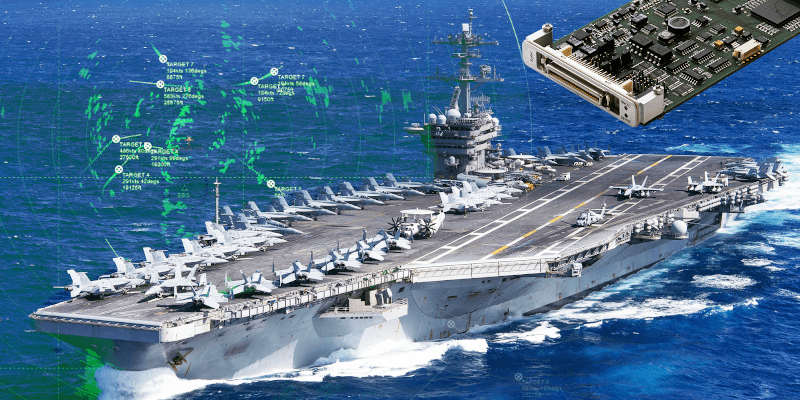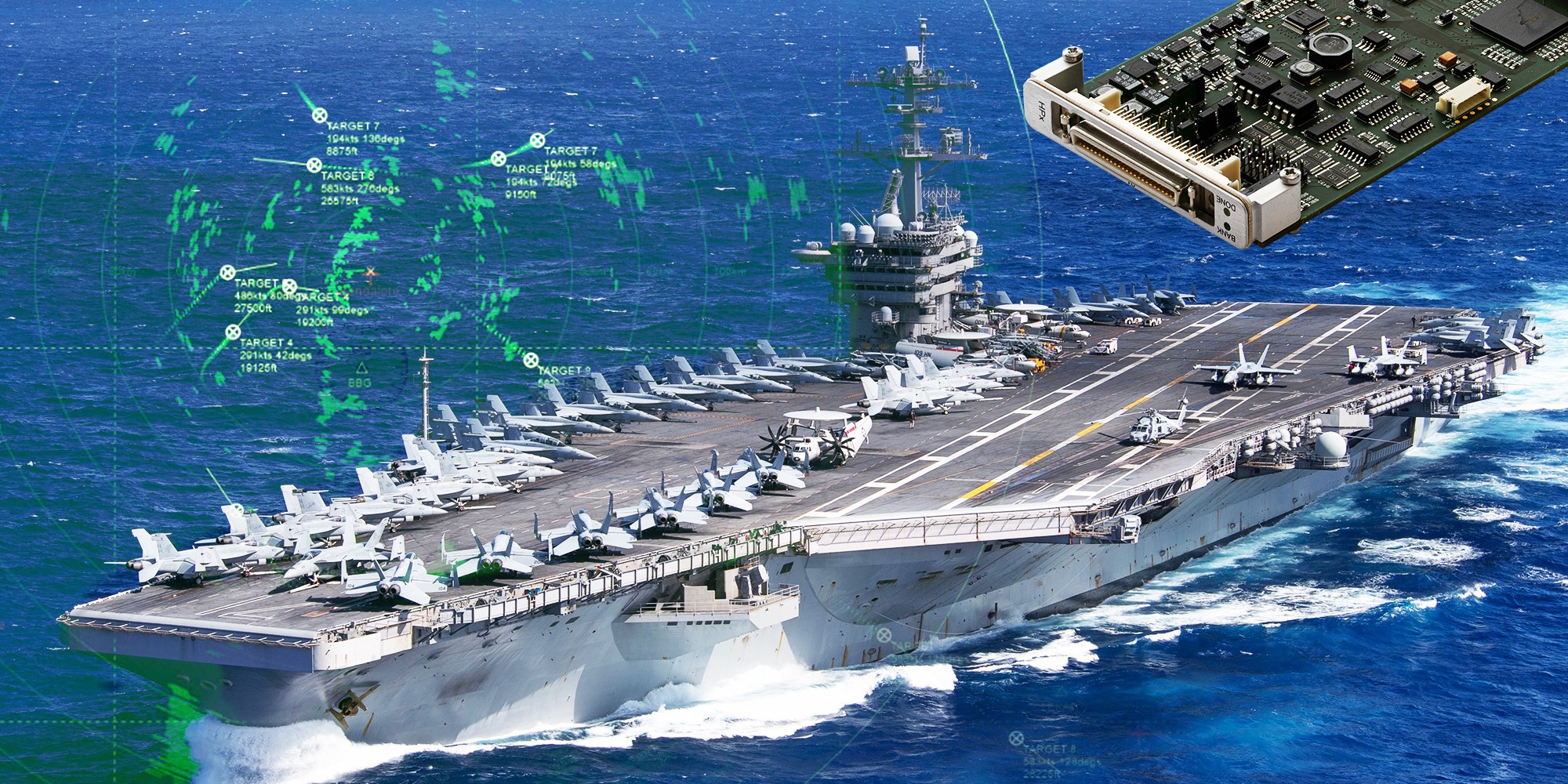- Cambridge Pixel to supply HPx-250 radar interface cards and SPx radar and IFF (identification friend or foe) plot extraction software to the Naval Air Warfare Centre for deployment on all US Navy CVN, LHA and LHD-class ships.
CAMBRIDGE, United Kingdom, April 6, 2021 – Cambridge Pixel, a developer of radar display, tracking and recording sub-systems, is supplying its HPx-250 PMC radar interface cards and SPx radar and IFF plot extraction software to the Naval Air Warfare Centre for the United States Navy’s AN/SYY-1 Shipboard Air Traffic Control Processing and Display System.
The AN/SYY-1 is the US Navy's upgrade to the AN/TPX-42 system used for shipboard air traffic control. The new system will be deployed on all CVN-class aircraft carriers as well as on helicopter landing ships (LHA and LHD-class vessels). Cambridge Pixel’s technology will be used to process radar returns, extract radar and IFF plots and display radar video from the primary and secondary radar video on all the ships.
Engineers developing the AN/SYY-1 system at the Naval Air Warfare Center – Webster Outlying Field (NAWC WOLF) in Saint Inigoes, Maryland, USA, needed a radar acquisition card and supporting software that provided radar plot extraction, IFF plot extraction, radar distribution and scan conversion. The AN/SYY-1 system uses a multi-sensor tracker to provide the Air Controller with a fused (composite) track comprised from all available sensors.
David Kenney, electronics engineer, Naval Air Warfare Center's Shipboard Air Traffic Control and Landing Systems, said: "We chose the Cambridge Pixel HPx-250 PMC card because it satisfied our three key requirements in a low powered, small form factor solution. The Cambridge Pixel team has also worked closely with NAWC WOLF personnel during development and responded to requests for unique modifications in an economical and timely manner."
David Johnson, CEO, Cambridge Pixel, said: "We are delighted to be offering our modular HPx and SPx radar processing components into this technology refresh program. We have incorporated considerable flexibility into the radar interfacing and data processing modules which has allowed us to accommodate the needs of the AN/SYY-1 upgrade."
Cambridge Pixel's HPx-250 is a PMC-format daughterboard that fits onto a VME processor board. The card receives radar signals, including video, trigger and azimuth, and passes the digitised and processed video to the SPx Server plot extraction software, which runs on the host computer.
For combined primary and IFF requirements, two HPx-250 cards are deployed on a single VME processor, with one instance of SPx Server software handling IFF decoding and plot extraction, and the other handling primary video plot extraction and video processing.
For IFF video, mode tags embedded in the video are used to identify the interrogation mode to permit correct decoding of altitude and call sign data. For primary radar video, plots are identified as areas of video passing a target-like acceptance criteria. Plots, along with digitised video, are passed out of SPx Server into downstream track processing and display.
Cambridge Pixel's HPx-250 card is part of a family of radar acquisition and processing components that provide system integrators with a powerful toolkit to build server and client display systems. A wide variety of signal types and input voltages are supported on the card, allowing connection to a diverse range of commercial and military radar types including those from Furuno, Hensoldt, JRC, Koden, Raytheon, Sperry, Terma, as well as specialist military radars.
The company's SPx suite of software libraries and applications provides highly flexible, ready-to-run software products or 'modules-of-expertise' for radar scan conversion, visualisation, radar video distribution, target tracking, sensor fusion, plot extraction and clutter processing.
Cambridge Pixel's radar technology is used in naval, air traffic control, vessel traffic, unmanned systems, Electronic Chart Display and Information Systems (ECDIS), commercial shipping, security, surveillance and airborne radar applications.
Its systems and software have been implemented in mission-critical applications with companies such as BAE Systems, Frontier Electronic Systems, Blighter Surveillance Systems, Exelis, Hanwha Systems, Kelvin Hughes, Lockheed Martin, Navtech Radar, Raytheon, Royal Thai Air Force, Saab Sensis, Sofresud and Tellumat.
Back to Listing



